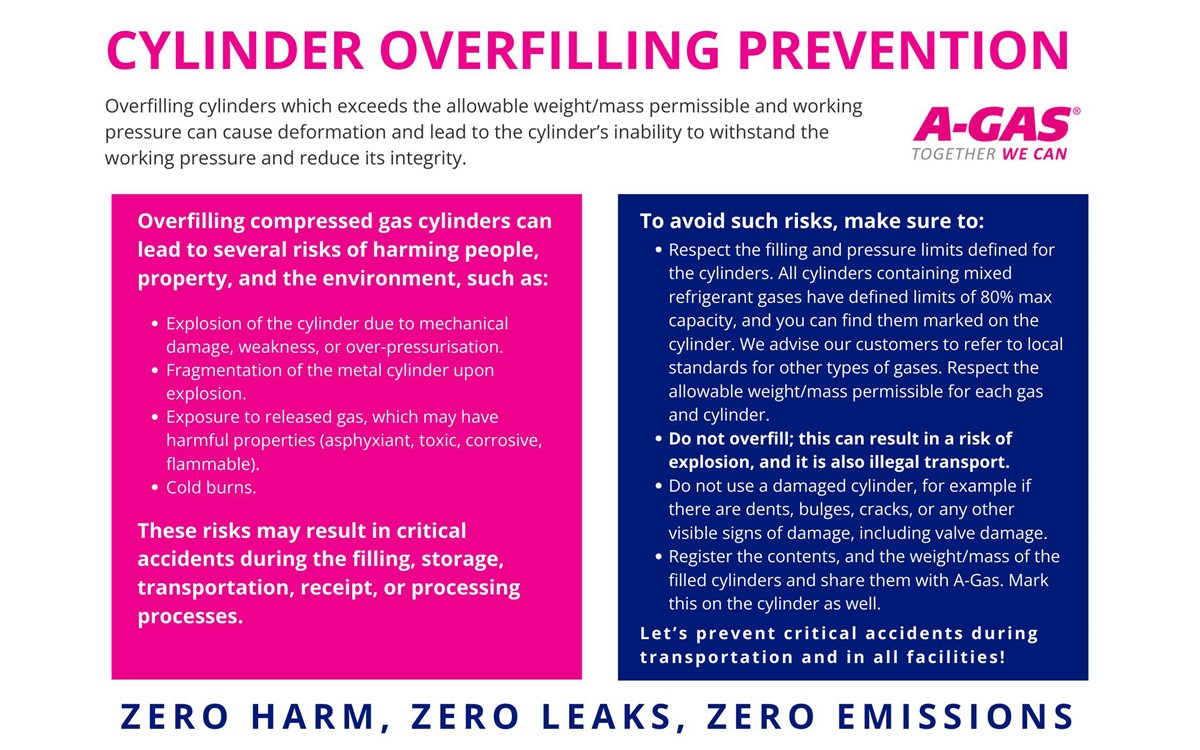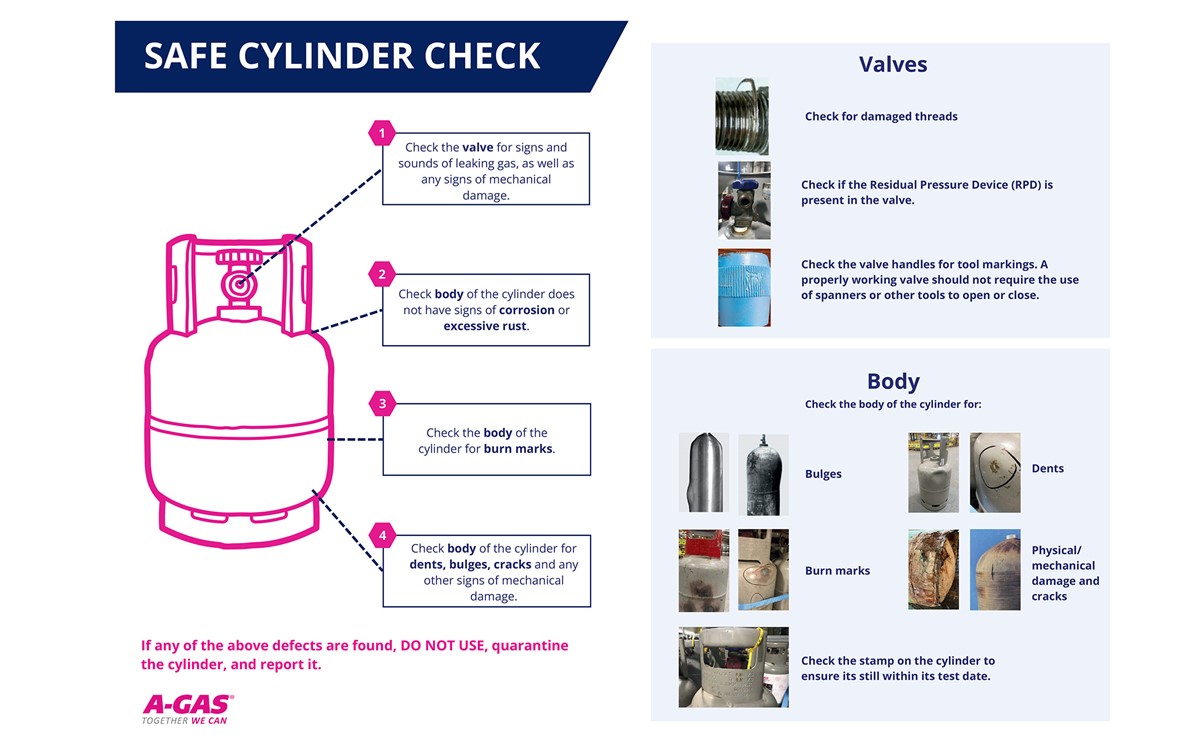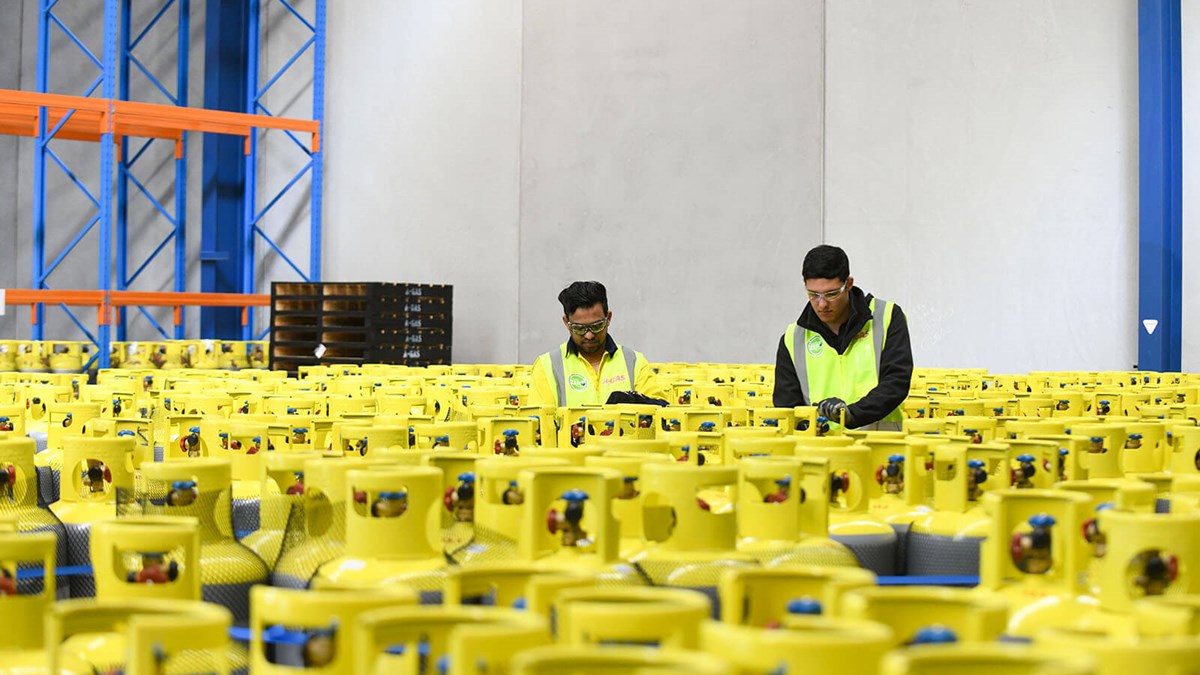Cylinder Overfilling Prevention and Cylinder Safety
At A-Gas, safety is at the forefront of everything we do.
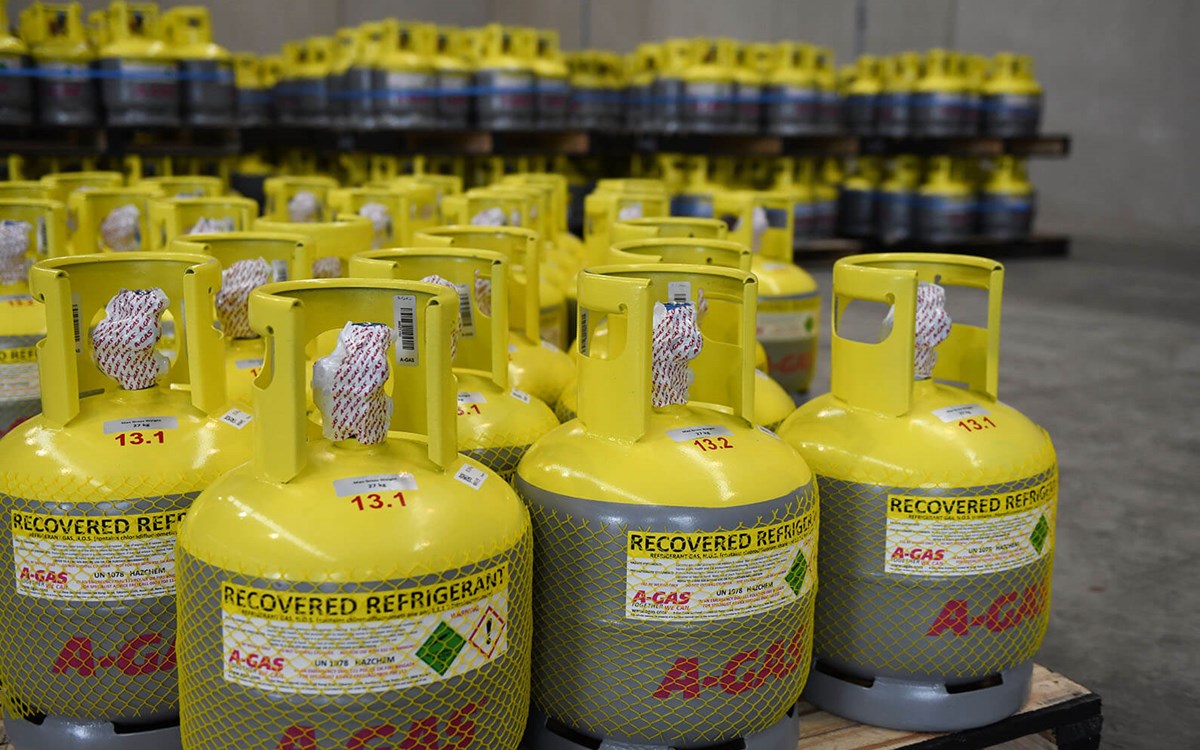
At A-Gas, safety is at the forefront of everything we do. We are committed to pursuing Zero Harm across all our operations to ensure the safety of our colleagues, customers, and the environment. For this reason, we are taking a proactive approach, raising awareness about topics such as cylinder overfilling prevention and the safety of cylinders within our business ecosystem to increase the safety of the industry.
Cylinder safety is a big part of our business. Here, we share our top tips to prevent overfilling cylinders. Please share this important information with anyone who handles or works with gas cylinders.
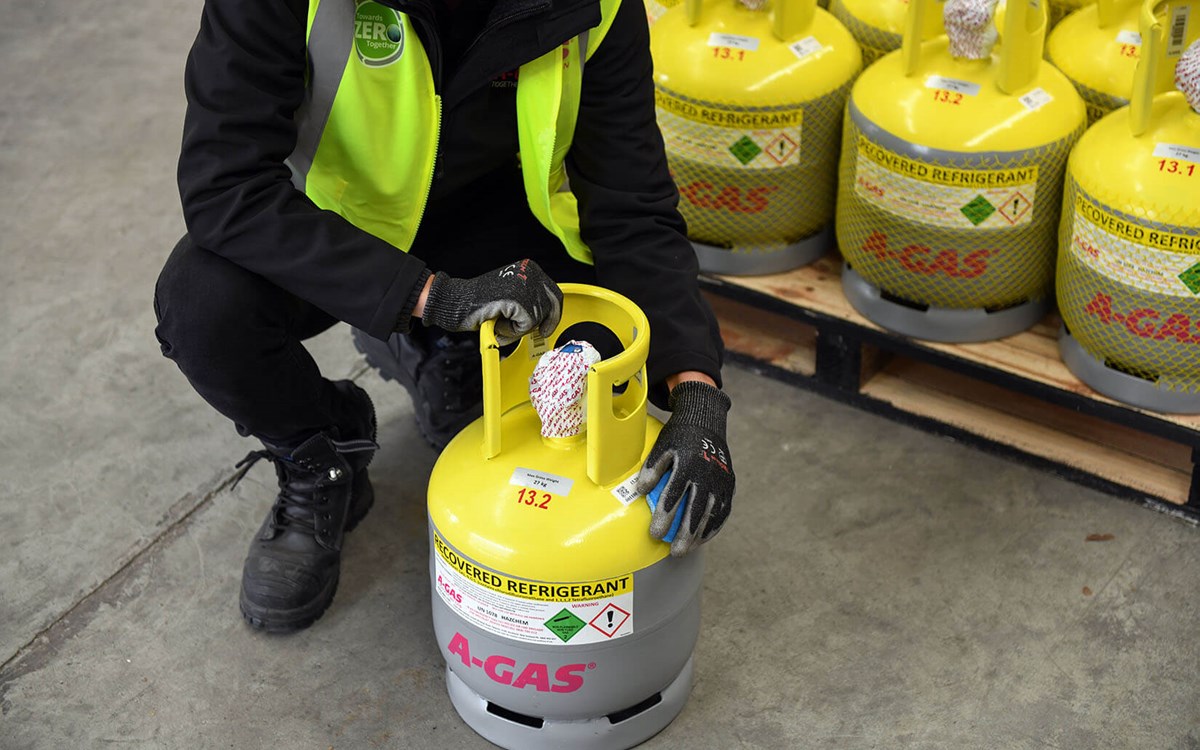
Cylinder Overfilling Prevention
Overfilling cylinders which exceeds the allowable weight/mass permissible and working pressure can cause deformation and lead to the cylinder’s inability to withstand the working pressure and reduce its integrity.
Overfilling compressed gas cylinders can lead to several risks of harming people, property, and the environment, such as:
- Explosion of the cylinder due to mechanical damage, weakness, or over-pressurisation.
- Fragmentation of the metal cylinder upon explosion.
- Exposure to released gas, which may have harmful properties (asphyxiant, toxic, corrosive, flammable).
- Cold burns.
These risks may result in critical accidents during the filling, storage, transportation, receipt, or processing practices.
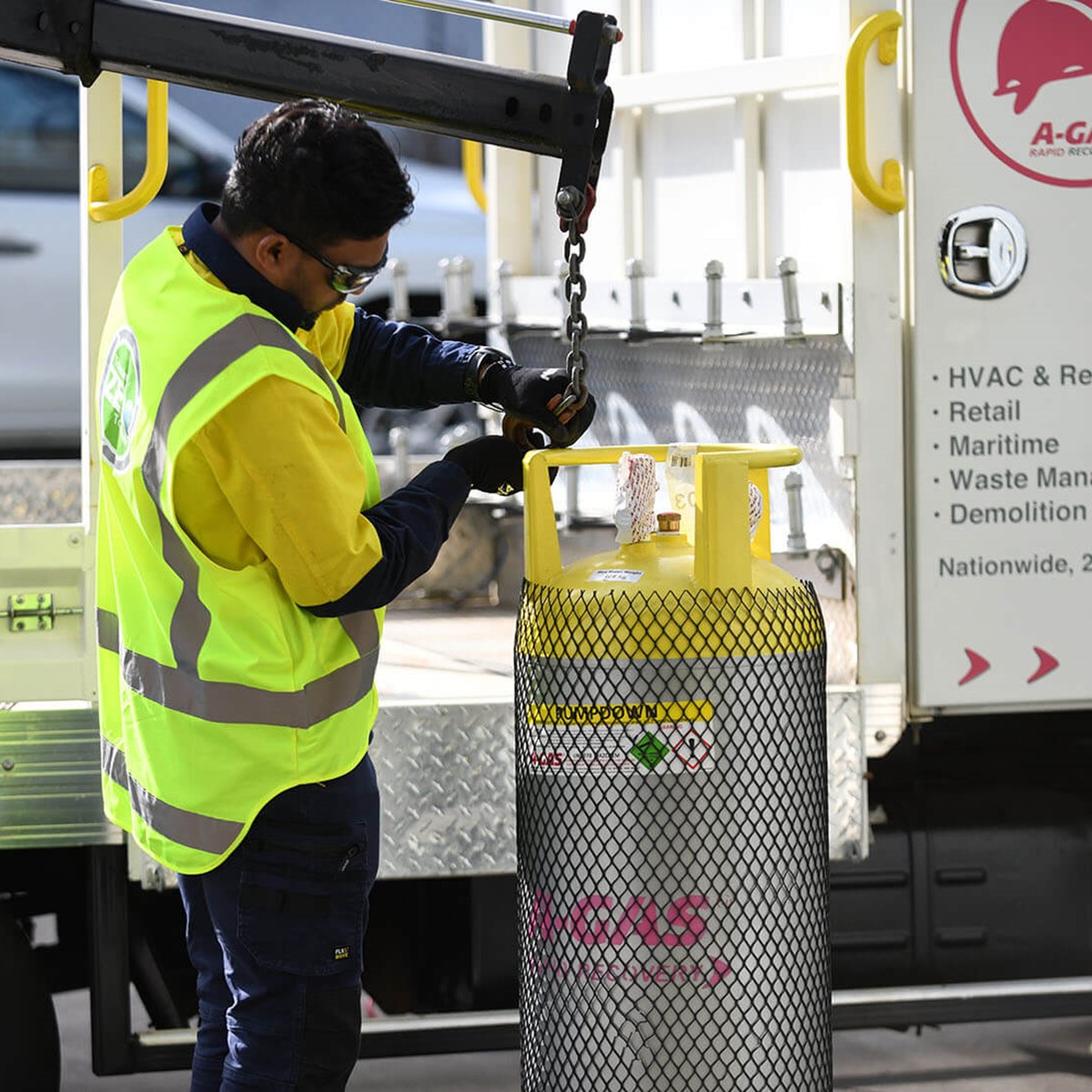
How to Avoid Risks of Cylinder Overfilling
To avoid risks of harming people, property, and the environment due to cylinder overfilling, it is essential to consider the following:
- Respect the filling and pressure limits defined for the cylinders. All cylinders containing mixed refrigerant gases have defined limits of 80% max capacity, and you can find them marked on the cylinder.
- We advise our customers to refer to local standards for other types of gases. Respect the allowable weight/mass permissible for each gas and cylinder.
- Do not overfill; this can result in a risk of explosion, and it is also illegal transport.
- Do not use a damaged cylinder, for example if there are dents, bulges, cracks, or any other visible signs of damage, including valve damage. Refer to the images below for examples of what to look our for.
- Register the contents, and the weight/mass of the filled cylinders and share them with A-Gas. Mark this on the cylinder as well.
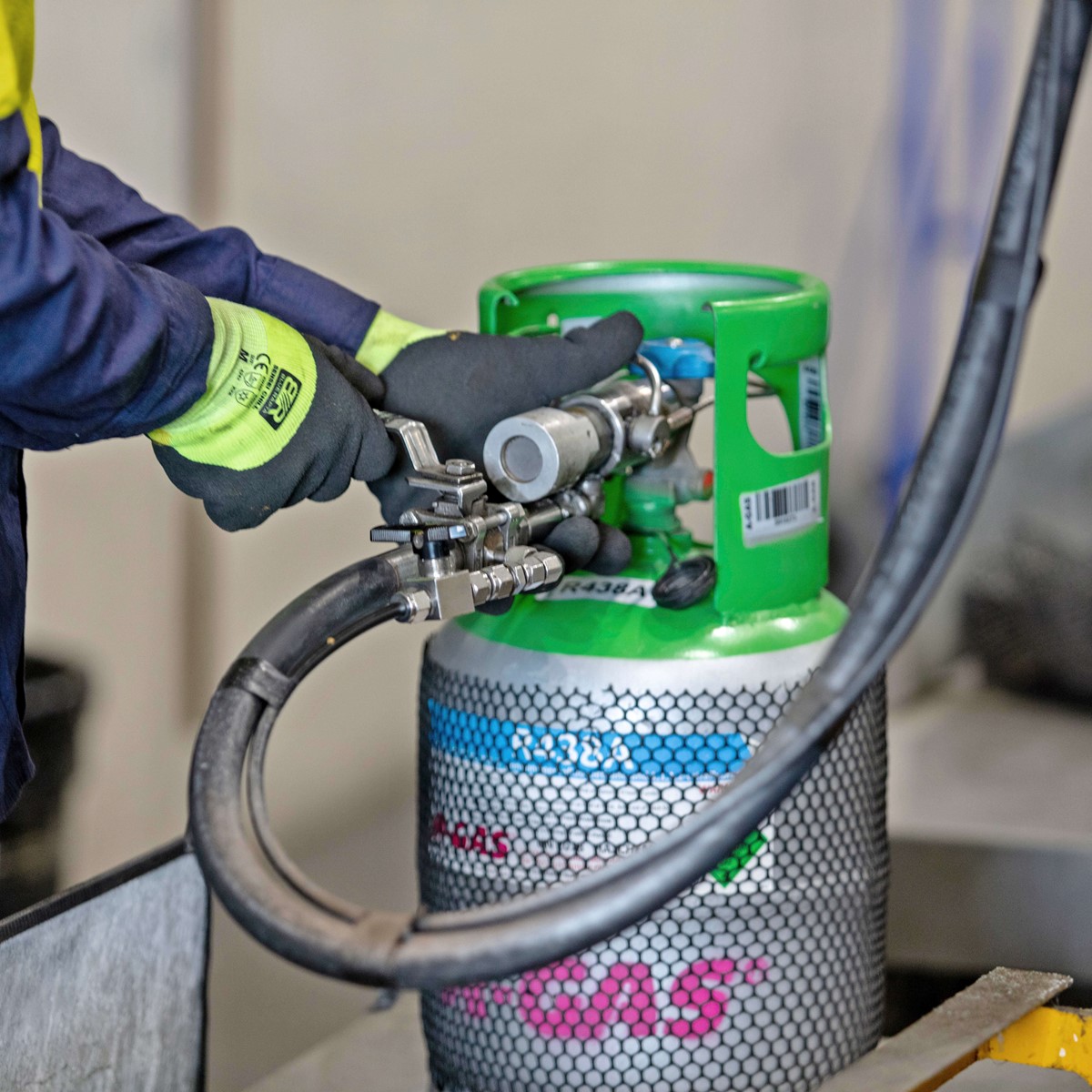
Download Free Cylinder Safety Resources
Download and share these valuable cylinder safety resources with anyone who handles or works with gas cylinders.
Safe Cylinder Check Poster
Poster containing tips on how to prevent gas cylinder overfilling.
